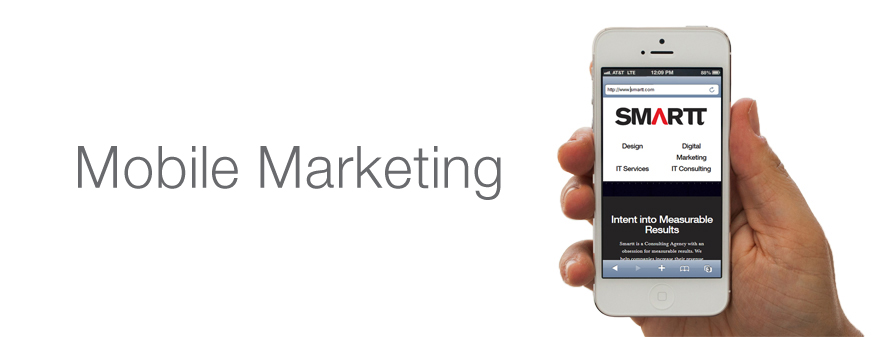5 mobile trends to incorporate into your marketing campaigns

The use of mobile devices continues to rise, with some studies indicating as much as 20% of all web traffic comes from a smartphone or tablet. Marketers are attempting to keep pace with the times, with ad dollars beginning to catch up with consumer preferences. Here are some new ways they’re catching mobile users’ attention:
-
Responsive Ads
Just like websites, ads need to adjust to fit a wide range of screen sizes, from smartphones to tablets to large monitors. If your ad is too small to read on a viewer’s screen, or so large it obscures their view of the content, they’re not very likely to pay attention to it. To compensate for this variety, advertisers are switching to responsive design techniques, whereby the elements of an ad and the webpage it is served on resize and rearrange themselves automatically to best fit a visitor’s screen. Not only does this ensure the optimal display and placement of the ad, it also creates a more seamless online experience for visitors as they engage over various devices.
-
Mobile Enablement
In order to streamline and integrate brand experiences, marketers have been incorporating mobile elements into broader campaigns to actively engage consumers with the ad message. Examples include texting a promo code to receive a coupon or prize, scanning a QR code to find out more information, joining a conversation over social media, or accessing a mobile app. These activities increase the consumer’s engagement with the company or product because they have taken an action to interact with the campaign, rather than just passively viewing an ad.
-
Native Advertising
Mobile consumers are busy and on-the go, meaning they’re more likely to skip past ads to get to the content they’re looking for. Marketers are keeping viewers’ attention by integrating their ads into the content, so that the message is part of the experience instead of an obstacle to it. Native ads you’re probably familiar with include paid search listings on Google and promoted feeds on social media. The trend has extended to mobile with content widgets on websites, sponsored elements in mobile games (such as Honda’s sponsored words campaign for “Words With Friends”), and branded apps that help consumers with their daily tasks. The key with native advertising is to offer content that is valuable to consumers to attract and keep their attention.
-
Location-Specific Promotion
Advertising to consumers’ mobile devices based on their location is an idea that’s been around for awhile. With many new smartphones now incorporating near-field communications (NFC) technology, it’s an area that’s gaining popularity. Examples of location-based promotions include providing coupons when visitors check into a site on Facebook or Foursquare, broadcasting promotions to people in or near your store via SMS, or offering samples that are accessed by tapping an NFC-enabled device to an ad on-site. Targeting consumers who are already at or near your business significantly increases the likelihood that they’ll take advantage of the offer.
-
M-Commerce
On–the-go consumers are increasingly using their mobile devices not just to search for information, but to buy things as well. Purchases made on mobile devices accounted for 12% of ecommerce growth in 2012, a figure which is expected to increase in the next few years. NFC technology has also made it possible for consumers to pay for their purchases or redeem coupons in-store with a tap of their smartphone. Brands are making it easy for mobile users to purchase using their phones by mobile-optimizing their online checkout process and by adding mobile payment technologies on site.
Mobile usage is guaranteed to keep rising, and mobile advertising is becoming an important part of the marketing mix. As your customers increasingly seek to interact with their favourite brands via their smartphones and tablets, it’s critical that you keep pace with the trends, or you risk losing their attention to more mobile-savvy competitors.


